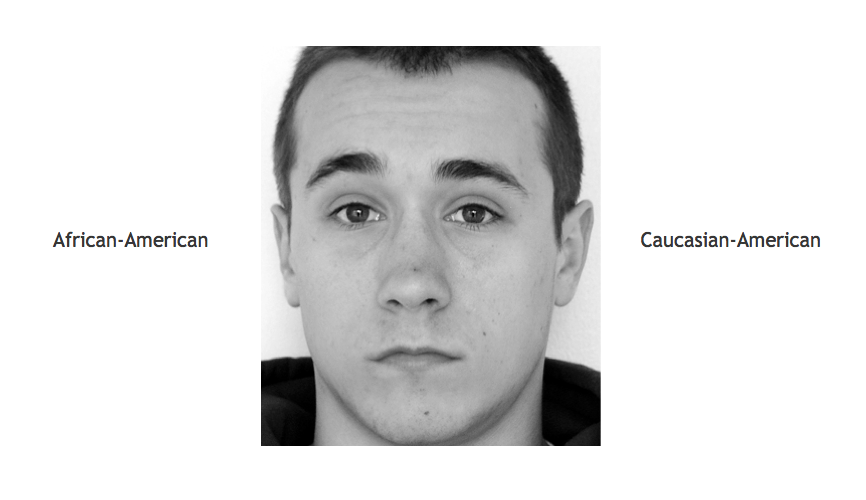Chapter 1. Implicit Association Test
1.1 Introduction
Implicit Association Test
Consciously, you might report that you are not, and even can not consciously be, prejudiced. Unconsciously, you might harbor a prejudice perhaps learned as a young child or inculcated by media or other sources.
In this experiment, your unconscious attitude toward a topic is assessed (Greenwald et al., 1998; Greenwald & Farnham, 2000). It is a replication of a study that suggests implicit or unconscious information affects our behavioral responses in some surprising ways. The clever trick in this experiment is never to directly address the potentially prejudiced attitude.
On some trials, you’ll be presented with either an African- American or Caucasian-American face. With the left hand, you indicate if the face is African-American and with your right hand, you indicate if the face is Caucasian-American. On other trials, you’ll be presented with a word like “JOY” and you have to indicate if it is a positive word (by using your left hand) or a negative word (by using your right hand). You never indicate if the face is positive or negative, but the left hand will be used to respond to both the African-American faces and positive words. Finally, there will be some trials in which you use the same hand for the African-American faces and the negative words. The question is what happens to your reaction time between the trials in which the same hand is used to respond to both African-American faces and negative words and the trials in which the same hand is used to respond to both African-American faces and positive words? Does just having the same hand to respond to two ideas that are consistent with the prejudicial attitude allow you to respond more quickly than when the pairing is inconsistent with the prejudicial attitude?
References:
Greenwald, A. G., & Farnham, S. D. (2000). Using the implicit association test to measure self-esteem and self-concept. Journal of Personality and Social Psychology, 79(6), 1022-1038.
Greenwald, A. G., McGhee, D. E., & Schwartz, J. L. K. (1998). Measuring individual differences in implicit cognition: The implicit association test. Journal of Personality and Social Psychology, 74, 1464-1480.
1.2 Experiment Setup

1.3 Instructions
Instructions
You will need to press the space bar to begin the experiment. When the trials begin, a stimulus will be presented in the center and your job is to indicate in which category it belongs. The category names will be indicated to the left and right of the stimulus. See below for a diagram of how the screen will appear.

You will use the following keys to make your responses.
| Key | What Response Means |
|---|---|
| Z | Category Left |
| / | Category Right |
The experiment will take place in five blocks of trials. In some of the blocks, the item will be a word such as “LIBERTY.” To one side will be the word “GOOD” and to the other side the word “BAD.” In other blocks, the stimulus will be a face, either African-American or Caucasian-American. To one side will be the word “AFRICAN-AMERICAN” and to the other side the word “CAUCASIAN-AMERICAN”. In some blocks, the stimulus might be either a word or a face and both sets of categories will appear. For the words, select either “GOOD” or “BAD” and for the faces, select either “AFRICAN-AMERICAN” or “CAUCASIAN-AMERICAN”. The screen might look as follows:

1.4 Experiment
Begin Experiment

1.5 Results
Results

1.6 Quiz
Quiz